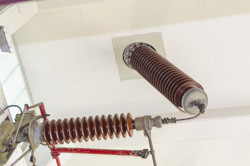The topology of insulating materials
Topological insulators are materials that are electrical insulators in the bulk, but conduct electricity on their surface —a feature not seen in ordinary insulators. The two different phases of matter coexist in heavy elements like bismuth and antimony, holding the key to future spintronics and other electronics applications. Most analyses of these materials have relied on highly simplified models in which electrons inside the solid were treated as though they do not interact with each other. Researchers working on the 'Quantum entanglement and topological phases of matter' (QETPM) project performed a more detailed analysis. The internal structure of topological insulators was approximated by a system of quantum particles interacting on a lattice in the presence of magnetic fields. Such systems are experimentally realised with ultracold atoms, but for QETPM researchers offered the most suitable theoretical description of topological insulators. They conducted theoretical experiments to establish the relationship between the basic states of this so-called Hofstadter problem and topological insulators. The team also examined whether the same rules that govern the formation of quantum Hall states for multiple interacting lattice systems apply to systems of coupled superconductors. At very low temperatures and under the presence of a strong magnetic field, thin films of semiconducting materials display the phenomenon known as quantum Hall effect. The same state, where electrons flow with no energy loss, can be achieved in the newly discovered topological insulators as well. QETPM researchers found a wide variety of quantum Hall states formed in lattice systems with different inter- and intra-layer interactions. In addition, they derived the excitation spectra of these multi-layer systems and predictions for new topological orders. Different phases of matter are found to be distinguished by their internal structures, which scientists call orders. The new topological orders found within the QETPM project are expected to extend and deepen our understanding of known phases of matter. They can also guide us to new phases of matter and explain exactly how a normal material can become a topological insulator.
Keywords
Topological insulators, phases of matter, electrical insulators, spintronics, quantum entanglement



